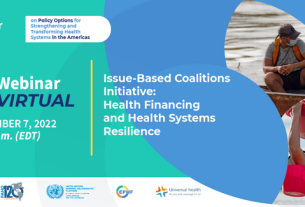[ad_1]
Ryan Haumschild, PharmD, MS, MBA: Do you start patients on different therapies based on whether they have reduced ejection fraction or preserved ejection fraction? What are some of the key differences in which you might focus one population health strategy on one patient population and another population health strategy on another?
Rohit Uppal, MD, MBA, SFH: Dr [John E.] Anderson entertained this question well. The differences from a population health perspective aren’t significant. When we look at these 2 groups, our goals for them are quite similar. We know that negative morbidity outcomes are similar for both groups, so what can we do to reduce symptoms and improve quality of life? As hospitalists, can we reduce the risk of readmission? The biggest difference is that for the patients with preserved ejection fraction, there’s no clear evidence that our interventions reduce mortality. But certainly, the goal of reducing morbidity is significant. With reduced ejection fraction, the strategy is clearer. How can we get our patients on evidence-based goal-directed therapy? I don’t have anything to add in terms of sequencing.
We’re seeing patients with preserved ejection fraction with many comorbidities, so we’re managing the symptoms of their heart failure to make those incremental improvements in their quality of life, and focusing more on the common conditions that we see alongside their CHF [congestive heart failure]: hypertension, AFib [atrial fibrillation], coronary artery disease, and diabetes. We manage those comorbidities just like we would in a non-CHF population, unless there are opportunities where maybe the second or third line of therapy overlaps with a heart failure therapy. Dr Anderson mentioned SGLT2 [inhibitors] for diabetics, or the mineralocorticoid receptor antagonist for hypertension, which are great examples of that.
Ryan Haumschild, PharmD, MS, MBA: I appreciate that overview. Dr Anderson did a great job giving his input on initial treatment, and that’s what helps guide a lot of the decisions. To your point, you might treat these patients the same. As long as we’re getting those outcomes and managing those comorbidities, that’s going to give them their best chance at reducing progression of heart failure.
Transcript edited for clarity.
[ad_2]
Source link



